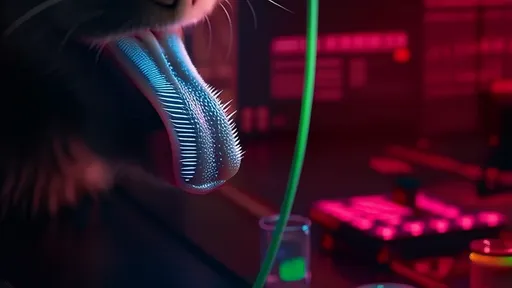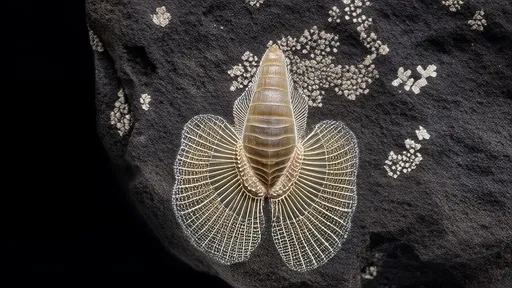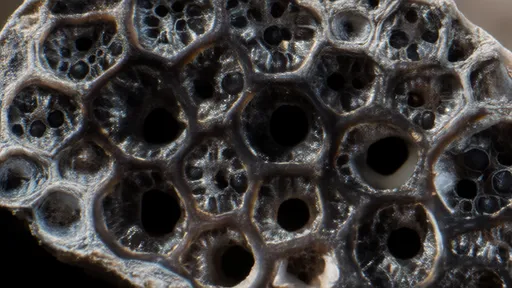The Cambrian Period, often referred to as the "Cambrian Explosion," witnessed one of the most dramatic bursts of evolutionary creativity in Earth's history. Among the myriad of life forms that emerged during this time, trilobites stand out as some of the most successful and enduring creatures. These ancient arthropods, which thrived for nearly 300 million years, left behind a wealth of fossils that continue to captivate scientists and enthusiasts alike. Perhaps one of the most astonishing features of trilobites is their compound eyes—sophisticated optical systems that rival modern arthropods in complexity and efficiency. These "optical miracles" of the Cambrian offer a fascinating glimpse into the early evolution of vision.
Trilobite eyes are a marvel of natural engineering. Unlike the simple eyespots of earlier organisms, trilobites developed compound eyes composed of hundreds to thousands of individual lenses, each functioning as a separate visual unit. This design allowed them to detect movement, distinguish light from shadow, and possibly even perceive rudimentary shapes—a significant advantage in the predator-rich waters of the Cambrian seas. The lenses themselves were made of calcite, a mineral that provided both durability and optical clarity. This unique adaptation raises intriguing questions about how and why trilobites evolved such advanced vision so early in the history of complex life.
The study of trilobite eyes has revealed surprising details about their visual capabilities. Some species, like those belonging to the genus Phacops, had large, bulbous eyes with fewer but more sophisticated lenses. These lenses were arranged in a way that minimized optical distortion, suggesting that these trilobites may have had better focus and depth perception than their contemporaries. Other species, such as those in the Olenellus group, possessed smaller, more numerous lenses, likely favoring a wide field of view to spot predators or prey. The diversity in eye structure among trilobites hints at a range of ecological niches and behaviors, from active hunters to bottom-dwelling scavengers.
One of the most remarkable aspects of trilobite vision is the discovery of "doublet" lenses in certain species. These lenses consist of two layers of calcite with slightly different refractive indices, effectively correcting for spherical aberration—a distortion that blurs images in simple lenses. This innovation, which predates human-made optics by hundreds of millions of years, demonstrates an extraordinary level of precision in trilobite eye evolution. Researchers have speculated that such advanced optics may have given these ancient creatures a critical edge in survival, allowing them to navigate complex environments and avoid predators with greater efficiency.
The preservation of trilobite eyes in the fossil record is nothing short of miraculous. Unlike soft tissues, which rarely fossilize, the mineralized lenses of trilobite eyes have survived in stunning detail. Paleontologists have used advanced imaging techniques, such as synchrotron radiation, to study the microscopic structure of these lenses without damaging the fossils. These investigations have confirmed that trilobite eyes were not just primitive prototypes but highly refined sensory organs capable of processing visual information in ways that were remarkably sophisticated for their time.
What makes the trilobite's visual system even more extraordinary is the fact that it emerged during the Cambrian, a time when most organisms lacked complex sensory organs. The rapid evolution of such advanced eyes suggests that vision played a pivotal role in the "arms race" between predators and prey during this period. Trilobites, with their keen eyesight, were likely both hunters and hunted, relying on their optical prowess to survive in a world where seeing—and being seen—could mean the difference between life and death.
Modern arthropods, such as insects and crustaceans, share some similarities with trilobite eyes, but none have replicated the unique calcite lens structure. This has led scientists to wonder why trilobites developed such a specialized system and why it didn't persist in later lineages. Some theories suggest that the calcite lenses, while effective, may have been too brittle or energetically costly to maintain, leading to their eventual abandonment in favor of more flexible materials like chitin. Others propose that changes in ocean chemistry or predation pressures made the trilobite eye design less advantageous over time.
The legacy of trilobite eyes extends beyond paleontology. Their intricate optical systems have inspired engineers and designers exploring new materials and technologies. The principles behind trilobite lenses, particularly their ability to correct aberrations without complex curvature, have potential applications in modern optics, from microscopes to cameras. By studying these ancient "optical miracles," scientists are not only uncovering the secrets of early vision but also finding innovative solutions to contemporary challenges.
Trilobites may have vanished from the Earth millions of years ago, but their eyes continue to see—through the lens of science. These Cambrian marvels remind us that evolution is a relentless innovator, capable of producing solutions that are both elegant and efficient. The study of trilobite vision is more than a journey into the past; it is a testament to the ingenuity of life itself, a story written in stone and light.

By /Jul 7, 2025

By /Jul 7, 2025

By /Jul 7, 2025

By /Jul 7, 2025

By /Jul 7, 2025

By /Jul 7, 2025

By /Jul 7, 2025

By /Jul 7, 2025

By /Jul 7, 2025

By /Jul 7, 2025

By /Jul 7, 2025

By /Jul 7, 2025

By /Jul 7, 2025

By /Jul 7, 2025

By /Jul 7, 2025

By /Jul 7, 2025

By /Jul 7, 2025

By /Jul 7, 2025